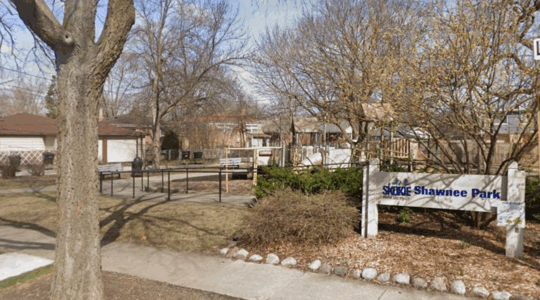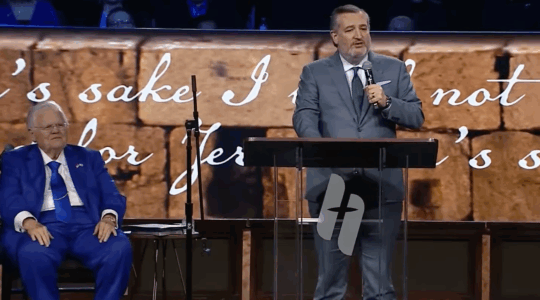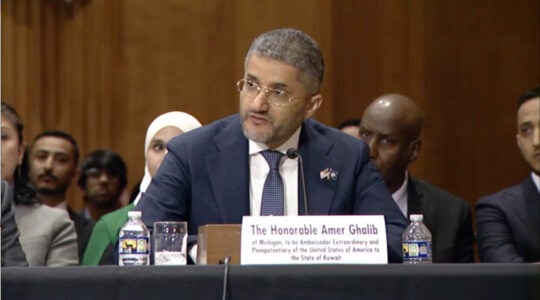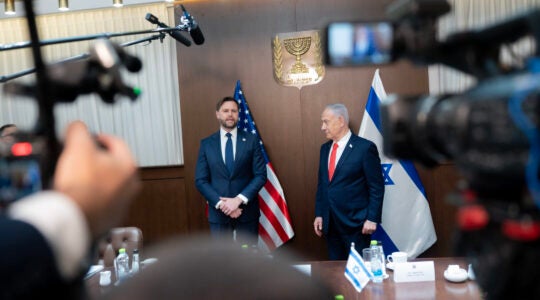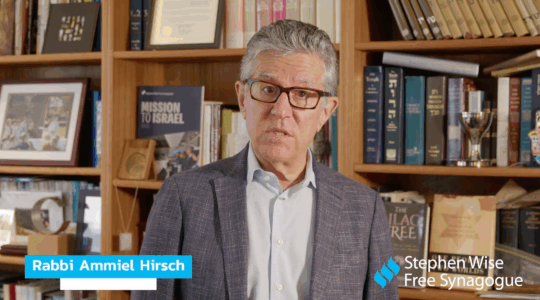BILLINGS, Mont. (JTA) – It’s Friday evening and Al Page, a board member of Congregation Beth Aaron, the only Jewish congregation in this town of 100,000, is out shoveling snow from the synagogue’s front door.
“Shabbat Shalom,” he says, his white yarmulke flapping as he greets visitors arriving not for worship services but for a screening of the 1979 Gene Wilder film “The Frisco Kid.”
It’s the first time this congregation of 50 to 60 familes has tried a movie night. But without a full-time rabbi since the mid-1980s, just a rabbinical student who flies in once a month, the members are trying something new.
“Going to services doesn’t appeal to everyone,” says Dr. Roxanne Fahrenwald, director of the Montana Family Medicine Residency and immediate past president of the congregation. “There are other things about Jewish culture that we’re only scratching the surface of.”
Lay-led congregations depend on volunteers for everything, from running services to shoveling the snow. That’s not easy.
“Not many people come to Billings to get involved in their Jewish identity,” says Donna Healy, a reporter at the Billings Gazette and longtime member of the congregation.
Don Alweis, a third-generation Montanan, has served as the congregation’s treasurer since 1979.
“It just becomes part of your daily life,” he says with a shrug.
The Jewish community of Billings vaulted to world attention in December 1993 when a year of hate violence directed against the town’s minorities culminated in an anti-Semitic attack against one of the town’s Jewish families.
An unknown assailant threw a brick throught the bedroom window of 5-year-old Isaac Schnitzer, who had displayed a menorah and Chanukah decorations there.
The incident so horrified this small town that thousands of citizens banded together and, in a strong show of solidarity, pasted paper menorahs on the windows of their homes and businesses. The strong community response, documented in the 1995 film “Not in Our Town,” launched an anti-hate campaign in hundreds of North American cities.
Jews were among Montana’s earliest white settlers in the mid-19th century, and even founded several of its major towns. But they have never been numerous. Today they form less than one-tenth of 1 percent of the state’s population, according to Julie Coleman, a longtime Billings resident and author of “Golden Opportunities: A Biographical History of Montana’s Jewish Communities.”
The first Jews came to Billings by train, she writes, and were mostly peddlers or dealers in furs and hides. They did not mix easily with the all-white, Protestant majority, and anti-Semitic restrictions carried on into the 1950s and 1960s.
A congregation was formed in 1918 during the nationwide flu pandemic, when the Jews needed to establish their own cemetery, but it was only during the 1930s that the first Friday night services were held in the homes of three local Jewish matrons.
A synagogue building was purchased in 1940, and a rabbi was hired 10 years later. In 1953, the congregation affiliated with the Reform movement.
But as in many small, isolated towns with only one Jewish congregation, services at Beth Aaron reflected the fact that the synagogue served Jews of all stripes.
Coleman writes that in the early years, they used the Reform prayerbook on Friday night and the Conservative prayerbook for all other services; men wore hats in synagogue but sat together with the women; and services were expected to be quick so the men could adjourn for their weekly poker game and the women could play bridge.
No one knows for sure how many Jews are in Billings today; estimates run from 300 to 1,000. The congregation over the years has remained fairly steady at about 60 members, but it has aged. In 1952, when Coleman moved to Billings, more than 100 children attended the religious school. Today there are six.
But unlike many other isolated congregations in the Midwest and western United States, Beth Aaron does not appear in any danger of disappearing.
While most of the children of the older congregants went away to college and never returned, other Jews are moving in, particularly teachers, people in the oil business and health-care professionals. Many of them form the bulk of the congregation’s active volunteer base, which includes those able to lead worship services and train bar and bat mitzvah students.
A new synagogue, which opened in time for High Holiday services in September 2005, marked a major change in the congregation’s life.
Fahrenwald recalls driving up and down city streets looking for the old synagogue when she first moved to Billings in 1998.
“It was invisible, this little tiny building,” she says. “It was meant to be low-key.”
The new synagogue is much larger, built with money raised from selling the old building to a nearby hospital that wanted to expand. The hospital gave Beth Aaron the land for the new synagogue, and local donors – some of them non-Jews – added to the pot.
Today, according to congregational president Tricia Williams, the congregation is considering hiring a permanent rabbi again, albeit on a part-time basis.
The new synagogue has given the Jewish community greater visibility, which Williams and Fahrenwald say it is ready for. Many more people call, both Jews moving into town or traveling through, and Christians interested in converting.
“It’s an acknowledgement that we’re here, we’re proud and we feel safe,” Fahrenwald says.
JTA has documented Jewish history in real-time for over a century. Keep our journalism strong by joining us in supporting independent, award-winning reporting.
